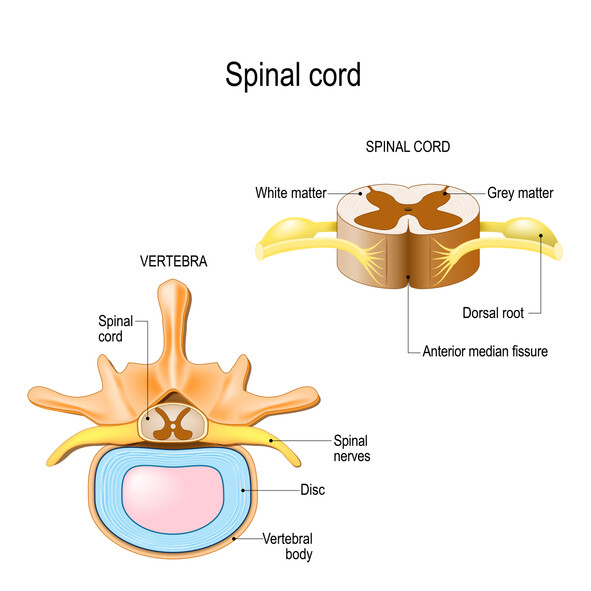Neck, back, and head injuries are common from car and other related accidents. Occasionally our Eason and Tambornini spinal cord injury attorneys are asked by our clients to help explain what some of the phrases or terms they have heard from their doctors mean. In this article, we will discuss what spinal cord syndrome is, as well as the differences between anterior cord syndrome, central cord syndrome, and Brown-Sequard syndrome. Lastly, we will cover what neurogenic shock is.

Having a spinal cord syndrome just means that you have an injury to some part of your spine. There are different types of spinal cord syndromes. Each syndrome is distinct because each one involves a different part of your spine being injured. Here are some common syndromes that can be caused by a car crash or slip and fall.
This syndrome is usually caused when your spine is whipped back and forth, like in a car crash. When the injury occurs, the anterior or front of the spine is injured. An injury to the anterior part of your spine may cause some loss, or all, motor function, light touch, pain and temperature changes below the part of your spine that was injured. However, you may be able to feel position, vibration, and touch still. If you suffered this type of injury, your symptoms would normally appear very quickly after the injury. This type of injury is very hard to treat and recover.
Central cord syndrome is usually caused when your head is snapped backward like if you fell down and hit your chin. It is called central cord syndrome because only the middle of your spinal column is injured. When an injury to this part of your spine occurs, you may get some patchy sensory loss. This injury is often missed in the emergency room as the injury is hard to find with most imaging exams, and the symptoms may be inconsistent. The reason that the symptoms may be inconsistent or patchy is that the injury can cause some of the pain and temperature fibers in your spine to cross up and interfere with each other. This injury is usually treated with immobilization for a period of time, followed by physical therapy and possibly surgery if nothing else works.
In economic periods where interest rates are high or historically at least average, annuities were a fantastic way to settle a case. It provided not only a tax-saving investment vehicle. As of the writing of this article, interest rates at historic lows, and in some cases, barely more than negligible. As a result, the structuring of a settlement over many years with a very low return is usually a bad idea. Until interest rates increase to be at least in line with inflation expectation, annuities do not make sense for most people who have suffered a traumatic brain injury.
Brown-Sequard syndrome is often caused by trauma. This syndrome occurs when there is an injury to a level in your spine that only affects one side of it. The symptoms include loss of movement to the same side of your body as to where the injury is. However, you may also experience a decreased sensation of pain, temperature, and sensation to the other side of your body. Commonly, treatment for this injury consists of surgery or injections to help reduce any swelling or inflammation to relieve whatever is causing pressure on the spine.
Neurogenic shock is caused when you suffer some type of injury to your spine, and your body responds with a slower heart rate and lower blood pressure. Neurogenic shock occurs because the autonomic pathways in your spine were injured and affect your heart and blood vessels. A common symptom after this type of injury is you would look and feel warm, and your body would become flushed due to your blood vessels being affected. Some may also suffer some trouble breathing, sweaty yet cool skin, dizziness, and anxiety depending on where in your spine, the injury occurred. The treatment for this injury includes medications to increase your heart rate and normalize your blood pressure.
What can you do?
If you have been in an accident and were told by your doctor that you have suffered a spinal cord injury, or suffer from one of the common spinal cord syndromes such as anterior cord syndrome, central cord syndrome, Brown-Sequard syndrome, or had a neurogenic shock, please contact one of our Eason and Tambornini spinal cord injury lawyer in Sacramento for a free consultation. We can help you obtain fair compensation for your spinal cord injury.

